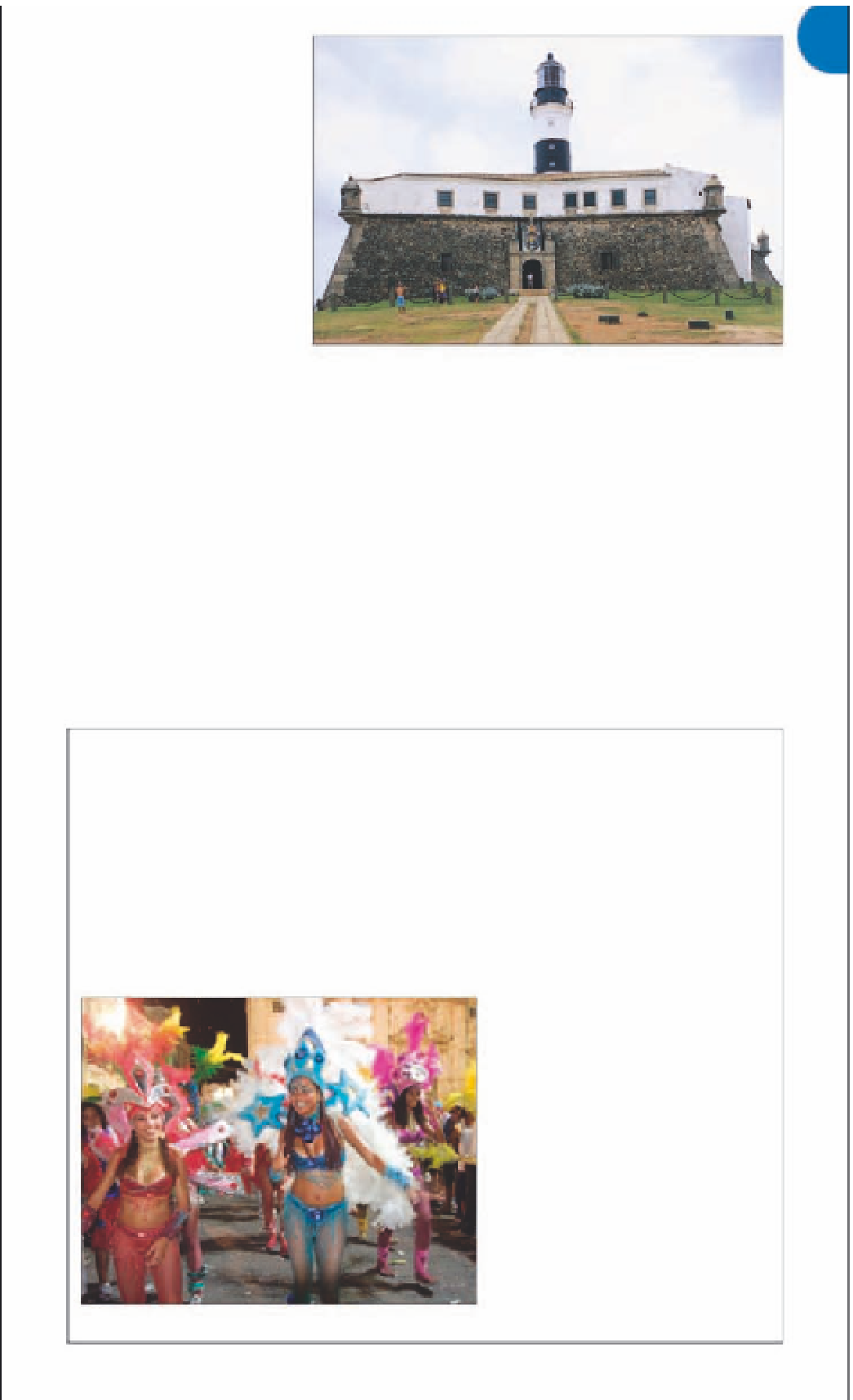Travel Reference
In-Depth Information
Museu de Arte
da Bahia
e
Av 7 de Setembro 2340, Vitória.
Tel
(071) 3117 6903.
#
2-7pm
Tue-Sun.
&
The Museu de Arte da Bahia
offers a glimpse of the opulent
lifestyle of Salvador's colonial
elite. The collection includes
paintings,
azulejos
, furniture,
silverware, glass, china, and
crystal used by the local ruling
families during the 18th, 19th,
and early 20th centuries.
The south wing holds land-
scape paintings by such artists
as José Joaquim da Rocha.
The Forte de Santo Antônio, topped by the lighthouse
Forte de Santo
Antônio
t
Praça Almirante Tamandaré, Largo
do Farol s/n, Barra.
Tel
(071) 3264
3296.
#
8am-7:30pm Tue-Sun.
&
A lighthouse atop the fort was
originally built in 1698, and is
still used by boats navigating
the entrance to the bay.
Inside the fort, the Museu
Hidrográfico (Museum of
Hydrography) shows historic
navigation instruments and a
variety of charts. There is also
a notable collection of coins
and China from a Portuguese
galleon that foundered in
1668, off Rio Vermelho beach.
The fort also boasts a
café with an outdoor terrace
offering sweeping views
of Salvador's skyline.
Museu Rodin-
Bahia
r
Rua Graca 284.
Tel
(071) 3117
6910.
#
10am-6pm Tue-Sun.
One of Salvador's best-known
landmarks, the Forte Santo
Antônio was erected in 1535.
The fort was strengthened in
the early 17th century, in
response to Dutch attacks on
the coast, and upgraded to
its present star shape at the
beginning of the 18th century.
This small museum, housed in
a 19th-century mansion near
Barra, holds four original
Rodin sculptures and a further
62 models made by Rodin
prior to construction of the
final pieces. Among them are
The Kiss
and
The Thinker
.
CARNAVAL IN SALVADOR
Salvador's signature event, the Carnaval is celebrated during February or March. The
center-piece is the
trio elétrico
, a giant flatbed truck carrying a massive array of speakers,
topped by a rectangular stage. The tradition was started in the 1950s with Dodó and Osmar,
two local musicians who took their music to the street on top of a 1929 Ford. Running out
from behind the
trio elétrico
truck, a large roped-off area serves as a movable dance floor.
Access to this area is restricted to those in an
abadá
, or uniform-style tank top. Revelers
outside the roped-off area are called
pipoca
, or popcorn, as they pop up everywhere.
Blocos
parade along one of three routes - Pelourinho, mostly for smaller and more
traditional groups, while Campo Grande runs through the narrow streets of downtown
Salvador, and Ondina goes through the beachside neighborhoods of Barra and Ondina.
Performers at the Carnaval include major Brazilian artists such as Daniela Mercury, Caetano
Veloso, Gilberto Gil, Carlinhos
Brown, and popular groups such as
Olodum, Ara Ketu, and Chiclete com
Banana. In addition to these name-
brand performers, there are Afro-
Brazilian
blocos
such as Ilê Aye,
which only allows people of black
heritage in their parade. The queen
of the Carnaval is Ivete Sangalo, a
noted exponent of
axé
, Bahia's
unique rhythm that combines pop
with
samba
and Afro-Brazilian beats.
The grand finale occurs in the
wee hours of Ash Wednesday. All
the various
blocos
make their way to
Praça Castro Alves for the Encontro
dos Trios, a last late-night jam that
marks the closure of the Carnaval.
Costumed dancers at the Salvador Carnaval





































